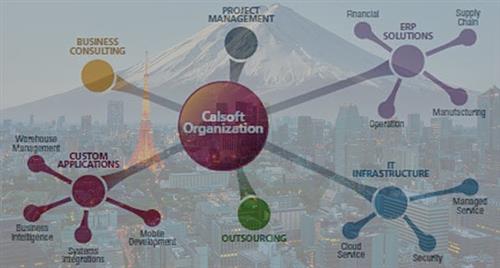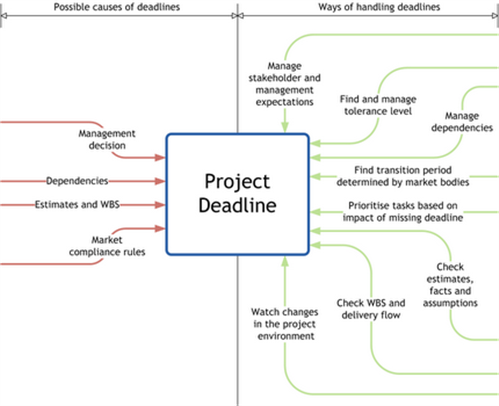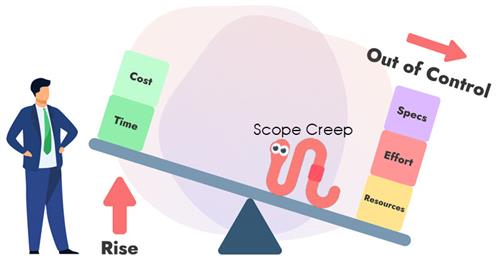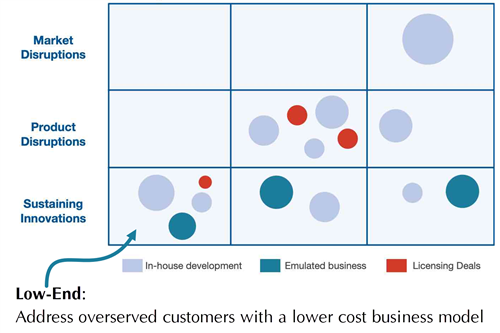
Southeast Asia Faces a Surge of “Fake AI Startups”
Last updated: July 26, 2025 Read in fullscreen view
- 25 Nov 2025
 How AI Agents Are Redefining Enterprise Automation and Decision-Making 27/42
How AI Agents Are Redefining Enterprise Automation and Decision-Making 27/42 - 01 Jul 2025
 The Hidden Costs of Not Adopting AI Agents: Risk of Falling Behind 17/108
The Hidden Costs of Not Adopting AI Agents: Risk of Falling Behind 17/108 - 07 Nov 2025
 Online vs. Offline Machine Learning Courses in South Africa: Which One Should You Pick? 16/30
Online vs. Offline Machine Learning Courses in South Africa: Which One Should You Pick? 16/30 - 21 Nov 2025
 The Rise of AgentOps: How Enterprises Are Managing and Scaling AI Agents 12/43
The Rise of AgentOps: How Enterprises Are Managing and Scaling AI Agents 12/43 - 06 Nov 2025
 Top 10 AI Development Companies in the USA to Watch in 2026 10/36
Top 10 AI Development Companies in the USA to Watch in 2026 10/36 - 24 Dec 2024
 Artificial Intelligence and Cybersecurity: Building Trust in EFL Tutoring 5/144
Artificial Intelligence and Cybersecurity: Building Trust in EFL Tutoring 5/144 - 28 Nov 2025
 How AI Will Transform Vendor Onboarding and Seller Management in 2026 4/21
How AI Will Transform Vendor Onboarding and Seller Management in 2026 4/21 - 12 May 2024
 The Pros and Cons of the Creator Economy in the Age of AI: Opportunities, Challenges, and the Gray Zone with the Gig Economy 3/231
The Pros and Cons of the Creator Economy in the Age of AI: Opportunities, Challenges, and the Gray Zone with the Gig Economy 3/231 - 09 Jul 2024
 What Is Artificial Intelligence and How Is It Used Today? 3/216
What Is Artificial Intelligence and How Is It Used Today? 3/216 - 04 Oct 2023
 The Future of Work: Harnessing AI Solutions for Business Growth 2/258
The Future of Work: Harnessing AI Solutions for Business Growth 2/258 - 21 Aug 2024
 What is Singularity and Its Impact on Businesses? 2/324
What is Singularity and Its Impact on Businesses? 2/324 - 21 Apr 2025
 Agent AI in Multimodal Interaction: Transforming Human-Computer Engagement 2/148
Agent AI in Multimodal Interaction: Transforming Human-Computer Engagement 2/148 - 05 Jun 2025
 How AI-Driven Computer Vision Is Changing the Face of Retail Analytics 2/77
How AI-Driven Computer Vision Is Changing the Face of Retail Analytics 2/77 - 17 Oct 2025
 MLOps vs AIOps: What’s the Difference and Why It Matters 2/67
MLOps vs AIOps: What’s the Difference and Why It Matters 2/67 - 24 Oct 2025
 AI Agents in SaaS Platforms: Automating User Support and Onboarding 1/52
AI Agents in SaaS Platforms: Automating User Support and Onboarding 1/52 - 06 May 2025
 How Machine Learning Is Transforming Data Analytics Workflows 1/148
How Machine Learning Is Transforming Data Analytics Workflows 1/148 - 29 Oct 2024
 Top AI Tools and Frameworks You’ll Master in an Artificial Intelligence Course 1/328
Top AI Tools and Frameworks You’ll Master in an Artificial Intelligence Course 1/328 - 05 Aug 2024
 Affordable Tech: How Chatbots Enhance Value in Healthcare Software 1/142
Affordable Tech: How Chatbots Enhance Value in Healthcare Software 1/142 - 23 May 2024
 Mastering AI: Sharpening the Axe in the Digital Age 1/182
Mastering AI: Sharpening the Axe in the Digital Age 1/182 - 18 Oct 2024
 The Dark Side of Japan’s Work Culture /7
The Dark Side of Japan’s Work Culture /7 - 15 Apr 2024
 Weights & Biases: The AI Developer Platform /170
Weights & Biases: The AI Developer Platform /170 - 10 Nov 2025
 Multi-Modal AI Agents: Merging Voice, Text, and Vision for Better CX /33
Multi-Modal AI Agents: Merging Voice, Text, and Vision for Better CX /33 - 27 Aug 2025
 How AI Consulting Is Driving Smarter Diagnostics and Hospital Operations /66
How AI Consulting Is Driving Smarter Diagnostics and Hospital Operations /66 - 29 Aug 2025
 How AI Is Transforming Modern Management Science /33
How AI Is Transforming Modern Management Science /33 - 22 Sep 2025
 Why AI Is Critical for Accelerating Drug Discovery in Pharma /53
Why AI Is Critical for Accelerating Drug Discovery in Pharma /53
A concerning wave of fake AI models is emerging in Southeast Asia. Many AI startups are under scrutiny for intentionally exaggerating their technological capabilities and revenues.
In early 2024, a Singapore-based AI startup became the center of attention across Southeast Asia—not for a technological breakthrough, but due to a scandal.
Albert Saniger, the former CEO of shopping app Nate, has been charged with defrauding investors in what the U.S. Department of Justice (DOJ) likens to a modern-day Mechanical Turk scam. Saniger claimed that his platform used artificial intelligence (AI) to reduce online checkout to a “single tap.” In reality, according to the DOJ, the process was entirely manual—carried out by workers in the Philippines.
Despite raising over $50 million based on these claims, Saniger alleged that the system achieved a 93% to 97% automation rate. The actual rate, as the DOJ revealed, was 0%.
This case highlights a troubling trend in today’s tech world: startups slapping the “AI” label onto their brand or product to attract investment and attention—often with little or no actual AI involved. It’s a misguided attempt to stay relevant and ride the hype, even at the expense of truth.
Vizzio Technologies, a company praised for its ability to create digital twins of cities using artificial intelligence (AI), was exposed for making false claims: the founder had faked a PhD degree from the University of Cambridge, and its list of major government clients was grossly exaggerated. While Vizzio’s technology was real, the narrative built around it was distorted, casting serious doubt on the credibility of its leadership.
Vizzio is not an isolated case. A worrying pattern is emerging across Southeast Asia: AI startups—often the darlings of investors and the media—are being closely examined for inflating their technological capabilities.
Some companies continue operations despite past missteps, while others—like Indonesia’s eFishery—are grappling with deep structural crises after being exposed for financial fraud linked to exaggerated AI claims. Still others, such as Nate—a startup headquartered in the U.S. but operating in the Philippines—have shut down entirely, leaving behind legal investigations and lawsuits.
These incidents raise fundamental questions about startup culture in the region, investor due diligence, and the race to ride the wave of AI hype. As Southeast Asia positions itself as a global innovation hub, the rise of “fake AI” startups threatens to erode trust in the region’s entire tech ecosystem.
THE AI SHELL GAME
At the heart of these scandals lies a common model: companies presenting manual processes or conventional software as cutting-edge AI technology. In many cases, there is only a thin layer of machine learning or natural language processing (NLP), while the actual product is far less sophisticated than advertised.
Vizzio Technologies is a textbook example. Founder Jon Lee (also known as Dennis Lee) was found to have faked a PhD in computer science from the University of Cambridge. This fake credential played a key role in attracting investors and media attention. Vizzio’s website claimed to have over 20 clients, including GovTech Singapore.
However, an investigation revealed that many of these organizations were not actual clients—some had never worked with Vizzio at all. While the company’s “digital twin” technology was real, its inflated claims about scale and prestige caused significant damage to its reputation.
Meanwhile, in Indonesia, agritech unicorn eFishery became the focus of a detailed audit in late 2024. Once valued at over $1.4 billion, eFishery had built its brand on IoT-powered fish feeders and a digital platform for aquaculture, which it claimed was AI-integrated for increased efficiency and deep insights.
A report from auditing firm FTI Consulting revealed that eFishery had inflated revenue by up to 75%, or around $600 million, during the first nine months of 2024. Internal data also showed that only 24,000 feeders were in use—far fewer than the 400,000 the company had claimed.
CEO Gibran Huzaifah admitted, “We faked the numbers,” explaining it was done to protect the company and its mission to support farmers. While some expressed sympathy, others reacted with harsh criticism. The financial wrongdoing forced eFishery into significant layoffs and cast doubt on the company’s long-term viability.
BEHIND THE CURTAIN: HUMANS POSING AS AI
Not all “fake AI” startups rely on fake degrees or inflated revenue. Some simply substitute algorithms with human labor and hope no one notices.
That was the case with Nate, a one-click shopping app headquartered in New York but supported by a large workforce in the Philippines. Marketed as an AI-powered automatic shopping tool with a 97% success rate, Nate raised over $50 million. In reality, its “AI” consisted of dozens of remote workers manually entering customer data, filling out forms, and placing orders in real time.
The fraud was exposed in 2022. By 2025, the U.S. Department of Justice charged founder Albert Saniger with fraud. Federal prosecutors claimed Saniger intentionally misled investors and customers about the level of automation, even instructing employees to conceal the manual processes involved.
This case has set a legal precedent for what regulators are now calling “AI washing”—the practice of rebranding manual or traditional systems as AI to attract investment or inflate valuations.
THE IMPACT ON SOUTHEAST ASIA’S INVESTMENT LANDSCAPE
While Nate was a global case, its use of a Philippine-based workforce highlights Southeast Asia’s dual role: both as a cradle of AI innovation and as an environment that inadvertently enables AI delusions. Outsourced labor, flexible regulations, and high-tech optimism have created a complex environment where oversight is inconsistent and due diligence often lacking.
Three main factors contribute to this landscape:
-
Investor Pressure: Startups in the region face immense pressure to demonstrate potential and technological sophistication early on. This can push founders to exaggerate capabilities—especially when competing for global capital.
-
Lack of Technical Transparency: AI is a broad term, often loosely defined. Many founders claim to have proprietary AI without disclosing whether their models are based on open-source tools or simple automation scripts. Limited access to core technologies makes it hard for non-technical stakeholders to verify legitimacy.
-
Reluctance to Challenge Authority: In many Southeast Asian business cultures, employees are hesitant to question leadership or expose internal misconduct, reducing the chances of whistleblower reports that could help prevent fraud.
The result is a “trust vacuum”. Founders fear that transparency will make them appear weak. Investors are reluctant to dig deeper for fear of missing out on the next hot deal. And regulators are constantly playing catch-up.
Thanh Minh (vneconomy)

































 Link copied!
Link copied!
 Recently Updated News
Recently Updated News